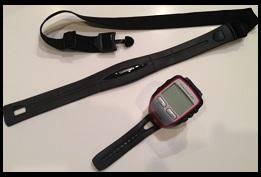
Arrhythmias--abnormal heart rhythms--are one of the most common heart-related problems for athletes. Sometimes an athlete may notice nothing more than a "skipped heartbeat." At other times, there can be palpitations, lightheadedness, or even unconsciousness associated with a sustained arrhythmia.
By their very nature, many types of arrhythmias are transient or paroxysmal--that is, they are fleeting. And often, they can be provoked by exercise. Because these arrhythmias can be transient and exercise-related, it can often be challenging for the doctor to sort things out. The athlete-patient arrives at the office with a normal heart rhythm and only a story of a problem that happened during a workout 2 weeks ago. There's no lasting "evidence" of the episode.
For diagnostic purposes, we typically use a Holter monitor--an EKG "tape recorder" of sorts--for periods of 24 to 72 hours to make recordings of the heart rhythm for extended periods of time. The patient, or athlete, wears a set of skin electrodes that attach to a recording device. The set-up would be something like wearing a bulky iPod. And although longer time-frame devices are increasingly available, it's often challenging for an athlete to capture his/her arrhythmia on such a recording.
**********
Published last week in the medical journal, Medicine and Science in Sports and Exercise, a group of investigators from Leipzig Germany issued a report entitled "Diagnosis of arrhythmias in athletes using leadless, ambulatory heart rate monitors." [1] They call our attention to 3 case reports of athletes in whom a standard exercise heart rate monitor provided useful clues to the diagnosis of their arrhythmias.
In Case #1, a 32-year-old cyclist with palpitations was found during an ER visit to have a brief episode of paroxysmal atrial fibrillation. Review of stored heart rate tracings from his heart rate monitor revealed evidence of heart rate (and cycle length variability) suggestive of atrial fibrillation that correlated temporally with his reported symptoms.
In Case #2, a 36-year-old cross country skier with palpitations during exercise presented for evaluation. The resting EKG, echocardiogram, and stress testing could not reproduce the arrhythmia. Subsequently, the arrhythmia recurred during exercise and the skier's heart rate monitor captured the event, with a heart rate of 230+. With specialized invasive electrophysiologic testing, the diagnosis of atrioventricular nodal re-entrant tachycardia (AVNRT) was made. The athlete underwent a successful ablation procedure.
In Case #3, a 28-year-old triathlete experienced episodes of tachycardia during exercise. Efforts at recording the arrhythmia on a typical Holter monitor were unsuccessful. His exercise heart rate monitor recording showed clear evidence of episodes of tachycardia, with heart rates of 170-200. He underwent invasive electrophysiologic testing and was found to have an ectopic atrial tachycardia and underwent a successful ablation procedure.
The authors report that different brands and/or models of heart rate monitors (Polar, Garmin) were used for each of these three patients. They noted that the important features were the ability to use vendor-supplied software to retrieve tracings of the heart rate information during periods of exercise.
**********
The report isn't surprising and I don't doubt that there are many athletes who've already thought to take their heart rate monitor tracings to their doctor or cardiologist. In a previous column at Endurance Corner, I shared a heart rate monitor strip from an athlete who was bothered with paroxysmal atrial fibrillation. The new report reminds us, though, to take advantage of ALL of the information that's available to us as we sort out arrhythmia problems in athletes.
Reference
1. Mussigbrodt A, et al. Diagnosis of arrhythmias in athletes using leadless, ambulatory heart rate monitors. Med Sci Sports Exercise 2013; epub ahead of print.
